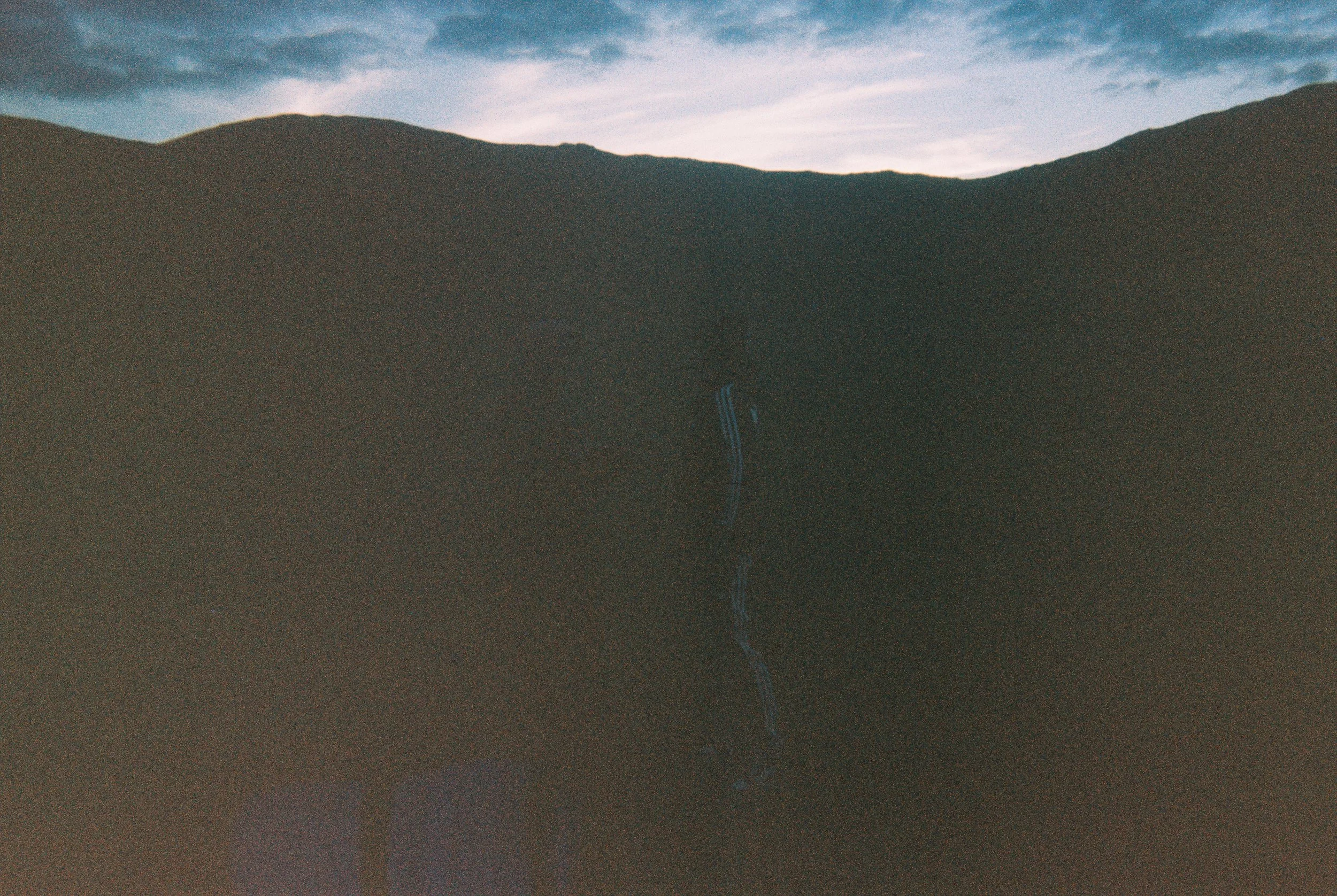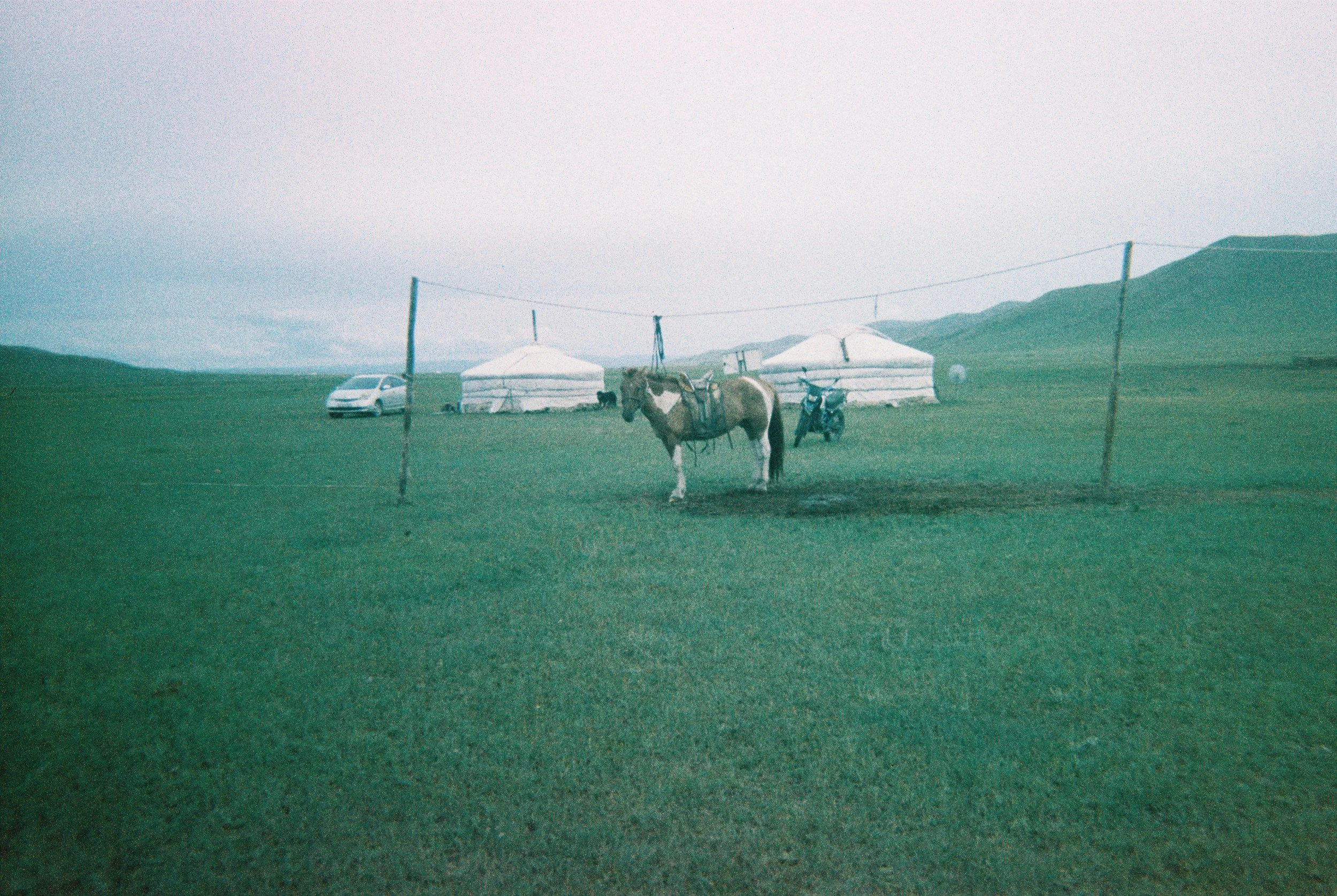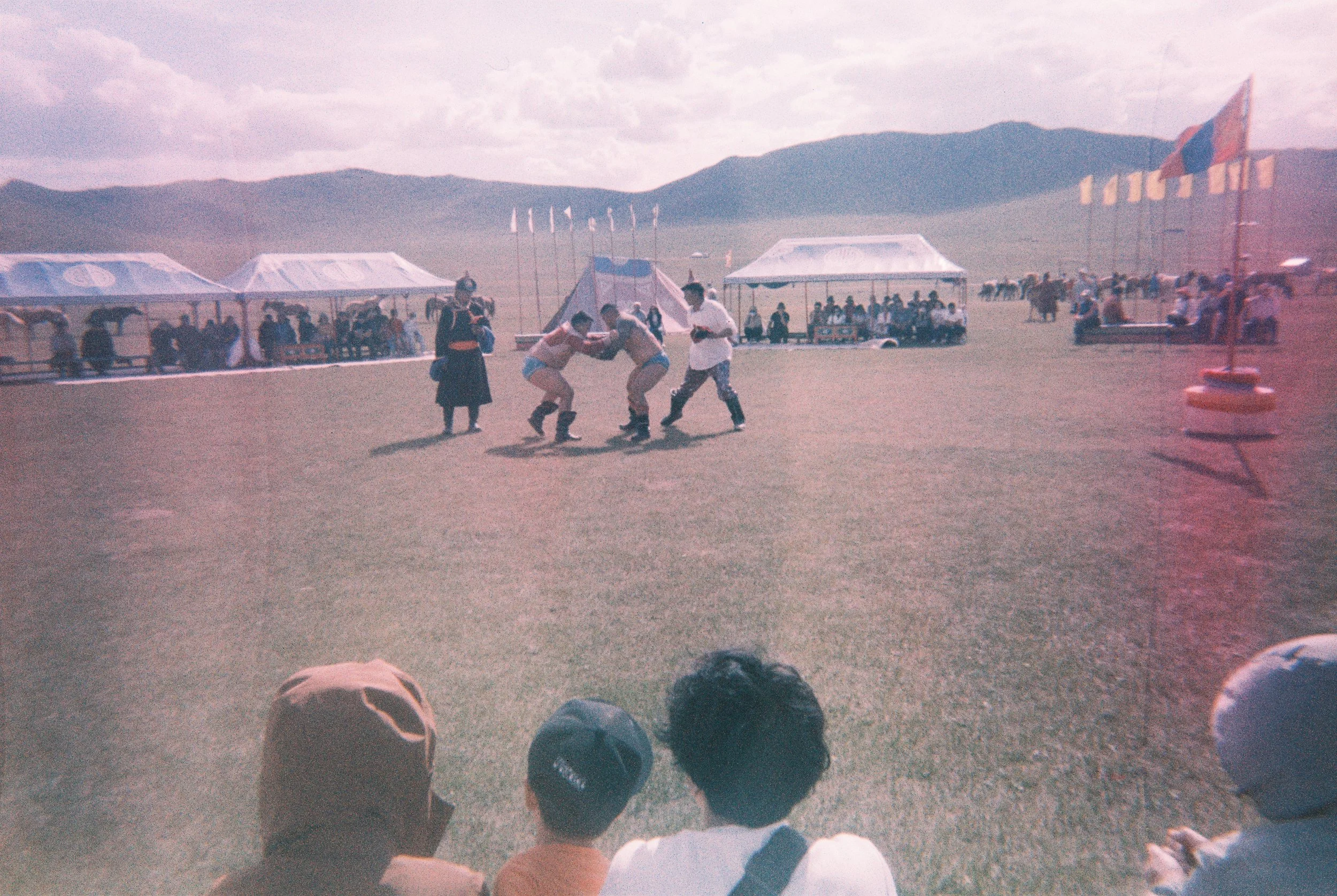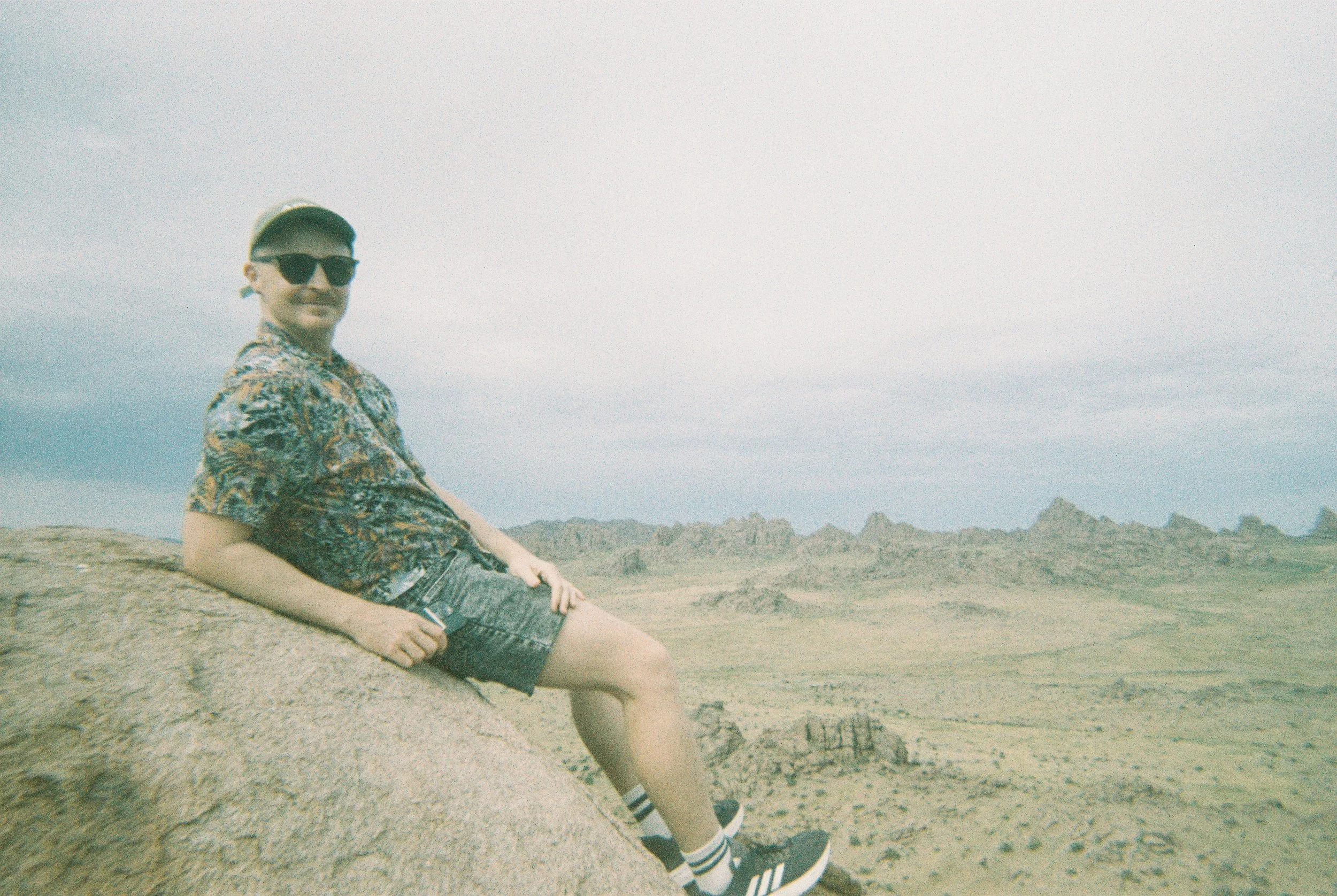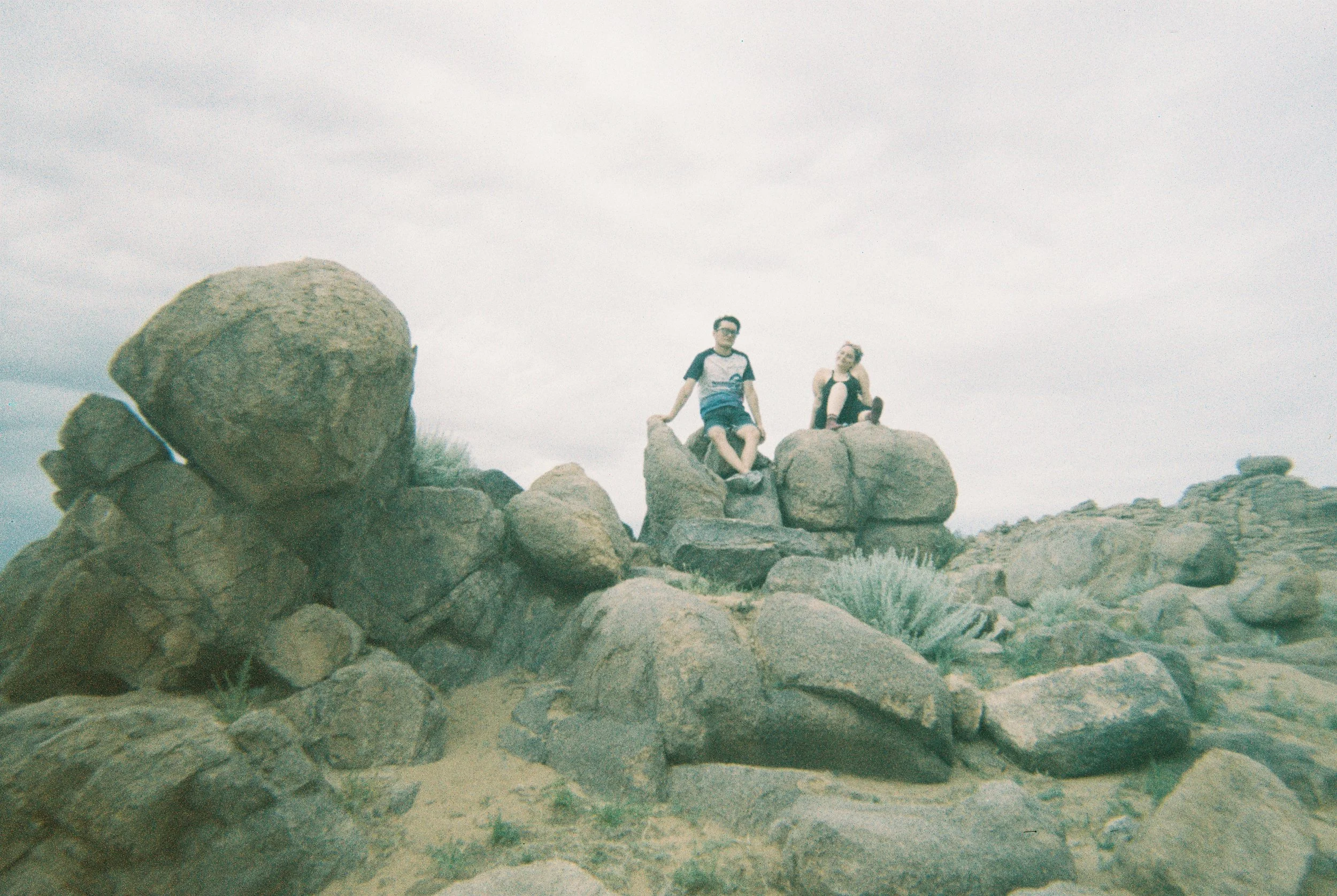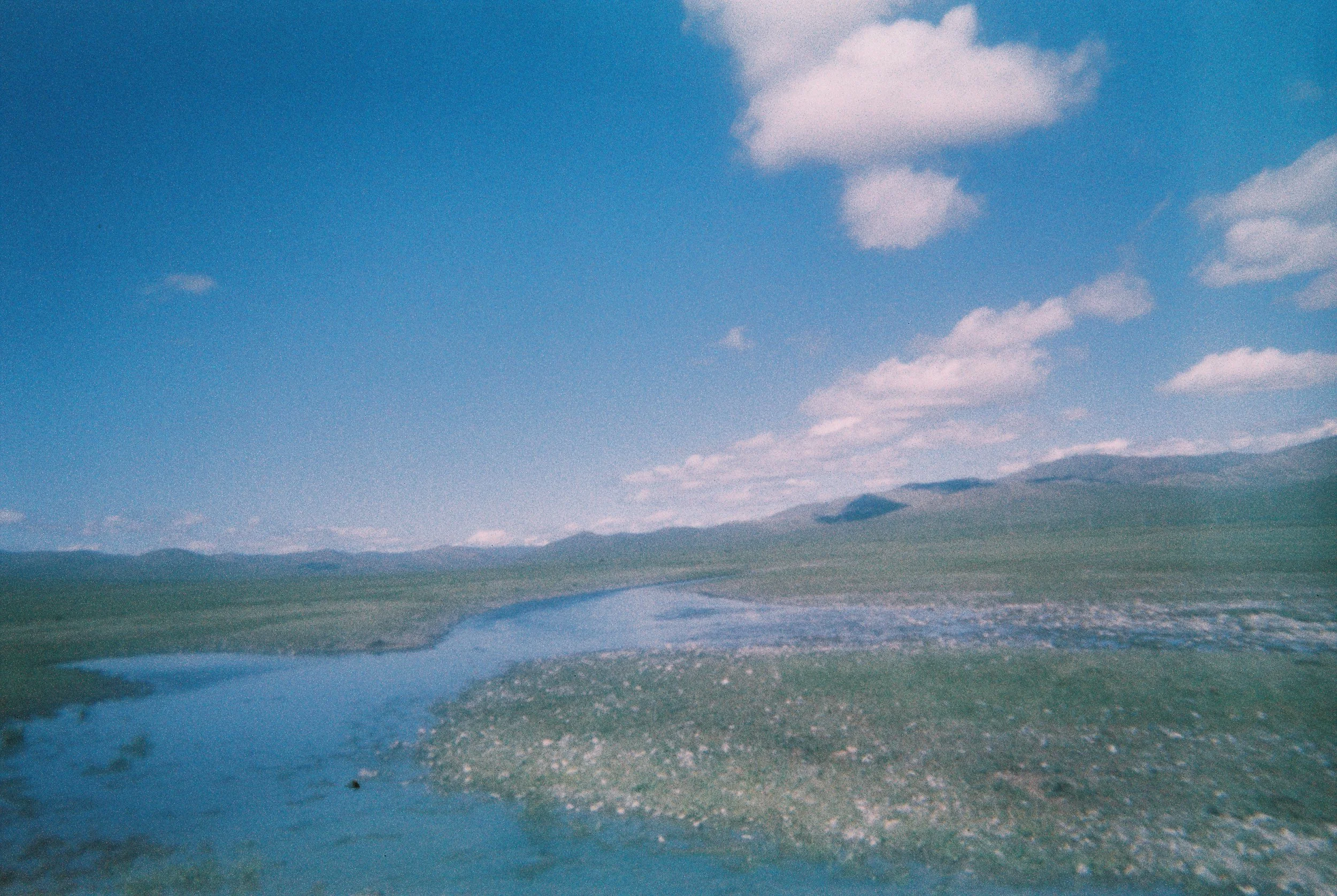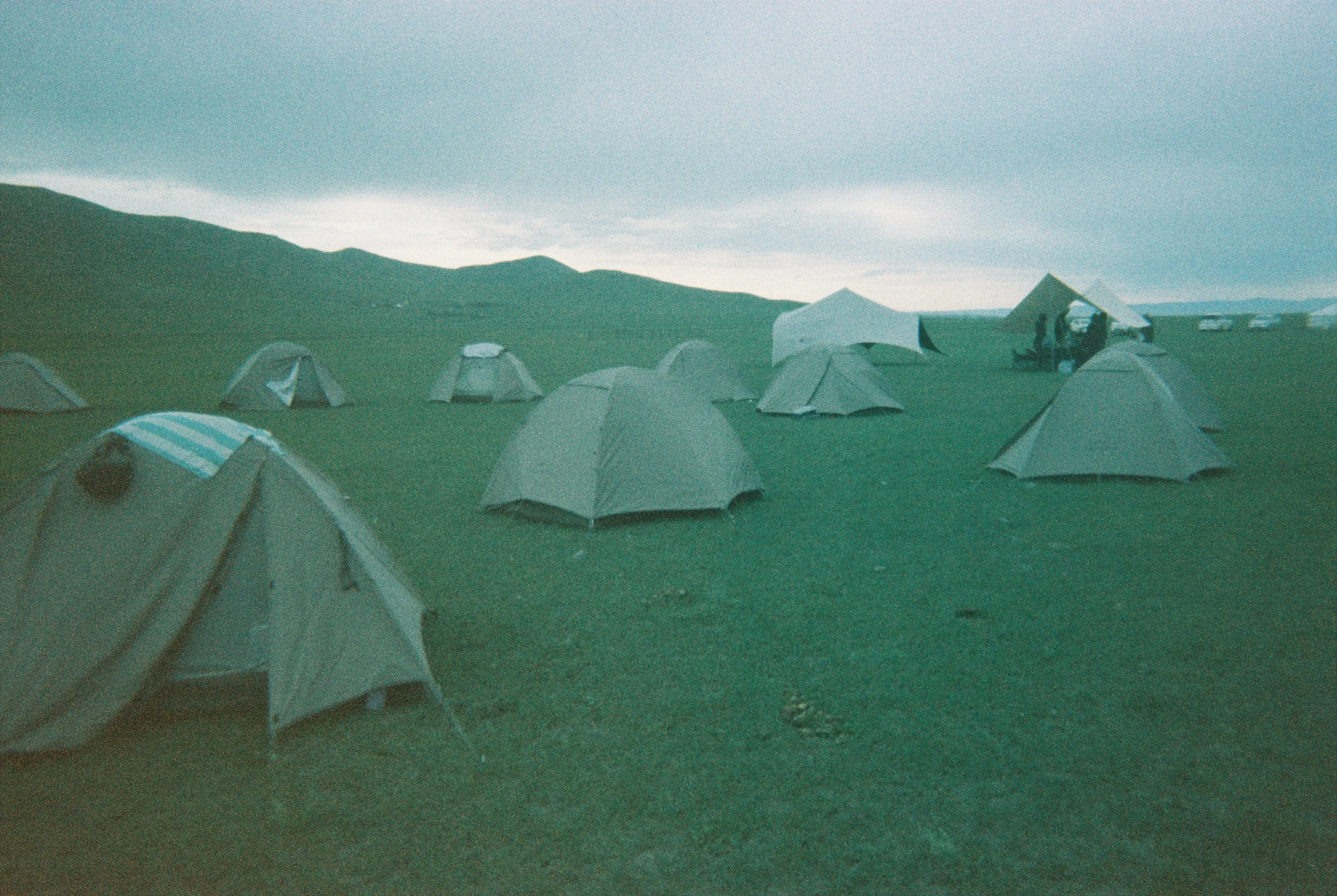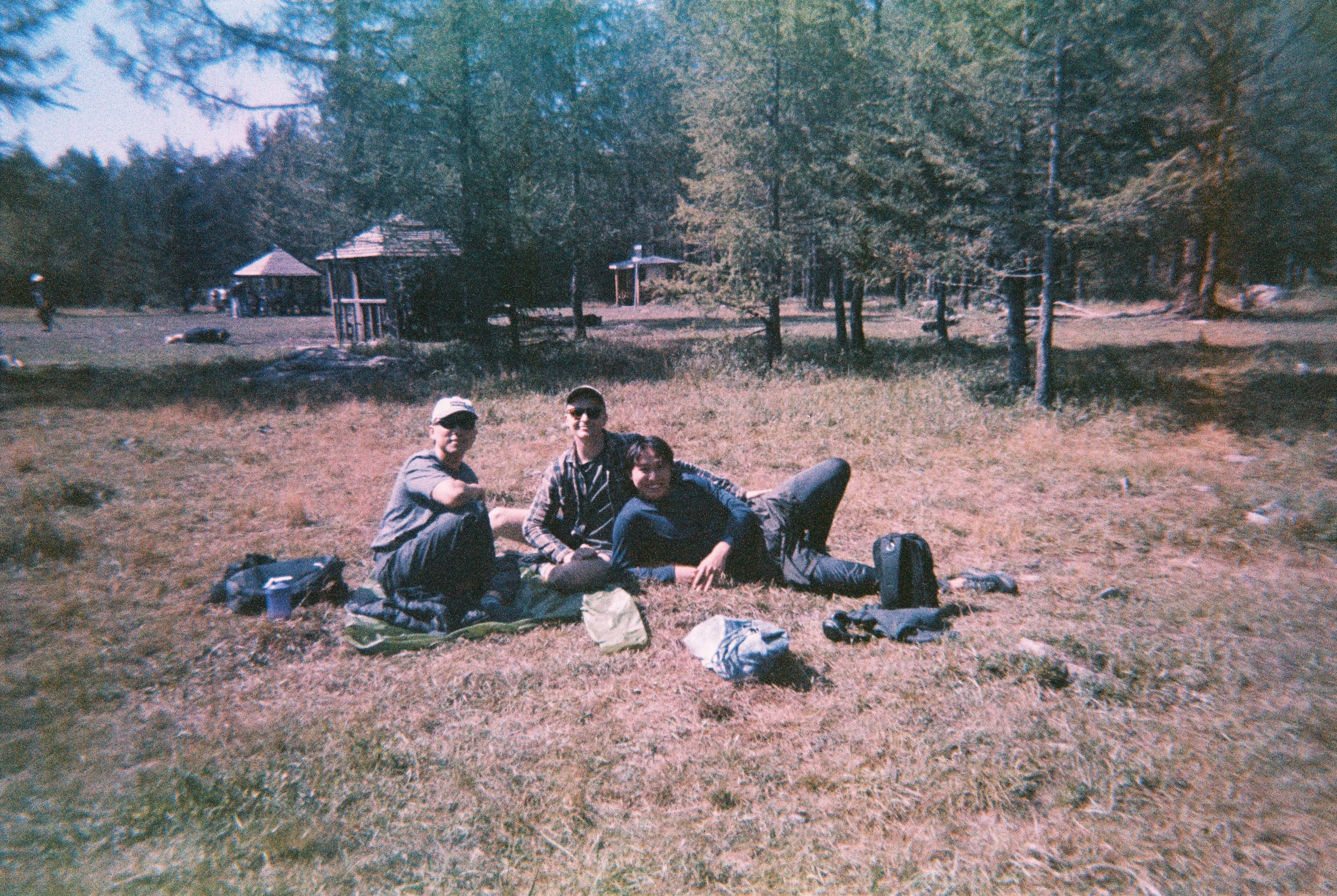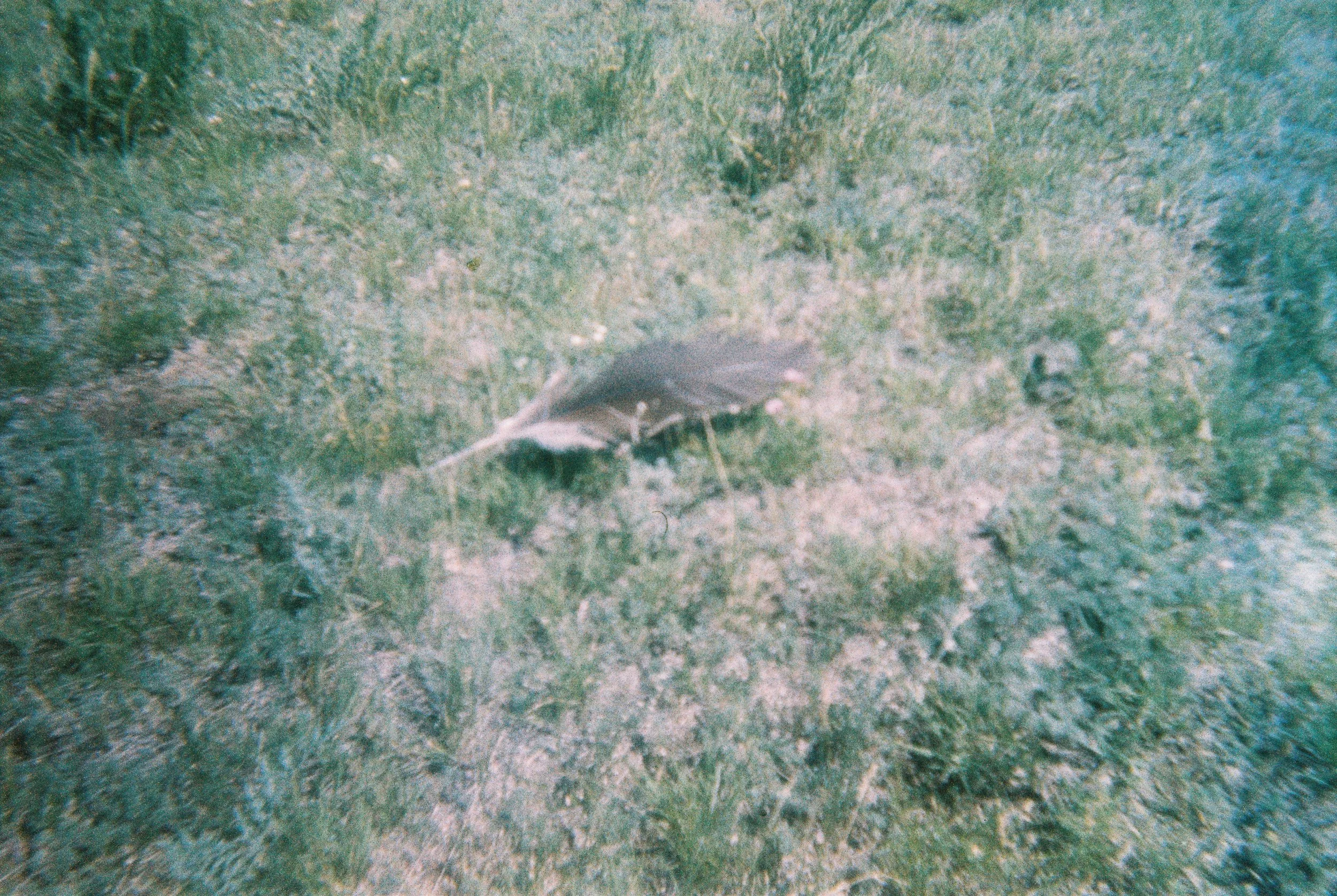New Worlds with Ancient Ghosts
“The here and now is a prison house. We must strive, in the face of the here and now’s totalising rendering of reality, to think and feel a then and there. Some will say that all we have are the pleasures of this moment, but we must never settle for that minimal transport; we must dream and enact new and better pleasures, other ways of being in the world, and ultimately new worlds.”
Recently I participated in A Journey Through Time and Space - A Nomadic Arts Residency in Mongolia. This program took a group of international artists from the city of Ulaanbaatar to the Gobi Desert, to share time with local artists, nomads, shamans, and the land and sky - to experience other ways of being in the world. It was a chance for me to think and feel a then and there.
If I had received funding for this residency, I’d be reporting on how it advanced my career (aka enabled deeper participation in capitalism). But I self-funded this trip, so I can reflect on it however I like. No logos, no receipts. Consider this post a personal acquittal - a queer reflection on my search for better pleasures in the here and now, and the then and there.
After this trip to Mongolia, I’m left wondering, as we imagine and orientate ourselves towards “new” worlds, can we u-turn towards the ancient?
The Pull
This was my fourth trip to Mongolia. The first was in 2015 as an artist in residence at the LGBT Human Rights Centre. I returned as an Australian Volunteer in 2022 to work at Zorig Foundation and the Arts Council of Mongolia until mid-2024.
What keeps pulling me back? On the surface, Mongolia offers off-the-beaten-track adventures, exposure to nomadic life, and exhilarating seasons. I can soak in natural hot springs while it snows, dance with drag queens under laser lights, overdose on homemade yogurts, curds, and creams, retrace and question Chingus Khan’s steps, ride horses through fields of wild flowers, cheer on wrestlers, and kayak across oceanlike lakes - to name a few of the pleasures of this moment. Beyond this - Mongolia can bend time, encourages expansiveness, and offer spiritual awakenings. All this is great stimuli for dreaming and enacting new worlds.
But let’s recap the residency first.
Day 1 - 2: Ulaanbaatar
Ancient Ghosts
Under the guidance of curator, Gantuya Badamgarav, we kicked off the residency and orientated ourselves in Ulaanbaatar by visiting some of the city’s arts and cultural attractions: Choijin Lama Temple, Zanabazar Museum, and the National Arts Gallery. These institutions protect objects that are portals to the past. Sacred treasures survived the Soviet era when most Buddhist temples were destroyed, hidden in people’s homes until it was safe for them to shine in the light again. They remind me that the past was a time of aliveness; imagination, song, sexuality, poetry. These objects - like us - are in a cycle of hiding and revealing - dependent of the safety of each moment.
In the here and now, how many Gods are forgotten?
How many abandoned ghosts sing us to sleep, awaiting their dance?
Could they all be remembered in the new worlds we seek?
Artists OF UBC (Ulaanbaatar City)
Next up we had the privilege of being welcomed into the studios of some of Mongolia’s leading contemporary artists. Let me introduce them real quick:
Nomin Bold trained as an artist shortly after Mongolia transitioned to a democracy and market economy. “Buddhist imagery in Nomin’s art serves as motifs and symbols of past traditions, now placed amid the contemporary realm of superfluous commodification.”
I first saw her 14m x 4m installation of grinning metal skulls at GOMA last year as part of APT:
“For the artists, skulls are ‘life cups’: vessels for human souls and consciousness that are confined within the human form. They represent subcultural currency and a convergence of European and Buddhist aesthetic traditions, where the skull is a memento mori — a reminder of mortality — and a talisman warning against an attachment to selfhood.” READ MORE
Baatarzorig Batjargal’s fine line zurag paintings are “concerned with the loss of traditional heritage through a succession of regimes, from the ascetic culture of Soviet-style communism to the rising inequalities and empty consumerism of US-style capitalism.” READ MORE
Some of his buddha’s wear Mickey Mouse Ears.
Munkhtsetseg Jalkhaajav’s “practice incorporates sculptures, paintings, videos, and performances and explores the notion of pain, fear, healing, and rebirth. Mainly reflecting her personal experiences, Mugi’s work investigates the complexities of female bodies, minds, and souls, and the connection with oneself and nature, capturing the tensions between different realms.” READ MORE
Erdenebayar Monkhor
“The horse is central to the cultural and spiritual world of Mongolians and one of their most important art motifs, even from the earliest rock art. For Monkhor Erdenebayar the horse has long been the main subject of his painting. And through this he not only expresses his love for the animal but also uses it as a metaphor for Mongolian national identity and as a way of exploring his own childhood memories.” READ MORE
Jantsankhorol Erdenebayar
Mugi and Erdenebayar’s son, Jantsa, follows on in his folks’ footsteps with his own style of Mongolian contemporary art, creating sculptures that celebrate process, imperfection, and DIY techniques that bring myth and modern day mysticism back to aggressively neutral gallery spaces.
“I am interested in how stories survive through generations and how beliefs or riddles are passed on. One of my sculptures, Distance of Deepness (2015) is based on the myth of the giant Mongolian death worm, which travels under the sand dunes. People believe it exists in the Gobi Desert. Even in the Western world, it appears in many comic books. I made a hybrid creature out of layers of cardboard covered in sawdust and added ox horns. I didn’t want to make it literal. I wanted to explore this unimaginable idea that we inherited from the previous generations which we hold on to. I was interested in how we become a vessel for stories and how we prolong their life by sharing them. As long as stories exists, they resist being forgotten.”
These artists help us dream new worlds - but they do so by looking deep into the past, bringing back to life ancient stories, symbols, and ideas. They help us question the prison house of the here and now, and inspire us to feel a then and there.
Day 4: Gorkhi Terelj
After a few days in the city, it was time to visit Gorkhi Terelj National Park, where dramatic granite stone formations jut out of grasslands and pine forests. Tourists are drawn here to pose with eagles, ride camels, and climb a big shiny statue of Chingus Khan on a horse.
We walked up the 108 steps to Aryabal Temple. The path was lined with signs displaying buddhist teachings. Number 39 read:
“The number of animals is much less than that of hungry ghosts; it is like comparing the number of stars that shine in the nighttime with those that shine during the day”
In Buddhist philosophy, Hungry Ghosts are spirits trapped in an endless cycle of craving and yearning. With bloated bellies and thin necks, they’re never satisfied. They can also be understood as metaphors for human attachments and addictions, the ways we seek or cling to what cannot truly nourish us. In rituals, offerings of food, incense, or song may be made to them, not only to ease their suffering but to remind the living of the dangers of insatiability.
I was thinking about hungry ghosts before my trip to Mongolia - thanks to a pack of new-age affirmation cards that cherry pick various concepts from various faiths - for people with ruptured connections to their own ancestral beliefs… like me! I was wondering about my constant traveling; is it fuelled by a hungry ghost within, seeking more? Am I searching for wholeness externally instead of looking inward? Should I practice more detachment, to dull the desire to experience other worlds? Am I running from something that I need to face? Or towards something I need to let go of? Does the search for liberated, creative queerness take me away from the present? Is the yearning for new worlds yet another craving of an inner hungry ghost?
After the temple visit, we ate khuurshur (fried flatbread stuffed with mince), drank Suutei Tsai,(salty milk tea), then rode horses through forests, fields, and streams. I was very satisfied.
Day 6 - 9: Gobi Desert
Mongolia offers space; physically - as the second most sparsely populated territory on Earth (after Greenland) - and temporally, as time is softer here. Seasonal, responsive, and less of a trap.
You can drive a Toyota Prius towards the horizon for days.
In what I consider part two of the residency, we made our way to Ikh Gazriin Chuluu in the Gobi. By day, we were reborn through granite womb caves, listened to the long songs of local “singer of the century”, Namjilyn Norovbanzad, soaked up the sun on an energy stone, and climbed to the highest point of “the great rocky land”.
By night, we cooled beer in a well then danced by a fire under the stars to a playlist spanning time and space - from the heartfelt songs of Inner Mongolia’s Urna, to the latest beats and raps by UB’s Young Mo’G. Then it was off to the ger to sleep, unless you were joining the desert karaoke crew, who I heard singing “I did it my wayyyyyy” from afar.
We did not see a giant Mongolian death worm.
Day 10 - 12: East Tov Province
In East Tov province, we pitched tents with a local family and had some time with the hills.
And then the shamans came. Offerings to the sky were made. There was drumming, smoking, singing, and a lot of vodka. The 500-year-old spirit arrived via vulture, who circled above us, calling.
The Shaman encouraged me to share creativity with children - especially the two boys - who I think must be my nephews, William and Ash.
That night, a wild thunderstorm hit. Due to the current climate catastrophe - these are becoming more common in Mongolia. It was bucketing down and the wind howled. The tent’s side somehow became the roof, just inches above my face. Thanks to the vodkas with the shamans - while other campers screamed in fright - I felt cozy, safe, alive.
The next day, most tents had bounced right back, and one of Mongolia’s renowned performance artists, Enkhbold Togmidshiirev visited us to generously share his work. He ran towards us from far away in the valley, burned dry horse manure in the wooden frame of a ger, suspended a heavy river stone with thick rope and wrestled with it, face-planted fresh manure then washed it off in a nearby stream… his child, and a local dog became a part of the performance, supported by the blue sky. Rooted in nomadic culture, and deep connections to the natural world, the work explored the pressures and responsibilities of our lives… the tensions, tasks, struggles, and releases…
Enkhbold’s performance brought a sense of occasion, ceremony, and curiosity. It was a glimpse at other ways, and new worlds - rooted in the past but imagined now. It was art intentionally interrupting the here and now’s totalising rendering of reality. What an absolute fucking gift.
DAY 13 - Hustai National Park
On the final day of the program, we went in search of the Przewalski's horses - horses indigenous to Mongolia that were once extinct in the wild. They have been reintroduced to Hustai National Park, and a couple of other locations, thanks to a pretty huge international conservation effort. They are considered the only remaining truly wild horse.
After sunset, the Przewalski's horses made their way down the ridges for a drink from the stream.
And then we saw an actual wolf.
“The wolf is revered in Mongolia. Chinggis Khaan (better known to the Western world as Genghis Khan) was descended from the union of a wolf and an elk, and the wolf is a potent symbol of Mongolian identity and nationhood. Wolves are Heaven’s Dogs, emissaries of Tenger, the Sky, and bearers of Tenger’s will.
Seeing a wolf conveys good luck, boosting a person’s hiimori, or energy.”
Post Residency
After the residency, I stayed in UB for a week to catch up with friends, reconnect with some of my colleagues, and rest.
Here I am with a couple of sweethearts after a hike up Bogd Khan Mountain… which we followed with brunch, complete with mimosas (it was pride week after all).
“New Worlds” Likely Very Old
Needless to say, this was a wild and nourishing trip. I’m grateful to Gana, the artists, nomads, shamans, horses, vultures, and wolves that showed us other ways of being, and helped us dream new (/ancient) worlds.
I’ll keep an eye on my inner hungry ghosts - who seek temporary escapes and dopamine hits as coping mechanisms or self-protection tactics in the prison house of the here and now. But this trip helped me forgive myself a little, and question the quiet shame associated with always moving, always looking. I can be tempted by the pleasures of the here and now – a cocktail, a massage, a one night stand, some new unethical material object… But deep down, my search is not for those things. I am searching and finding landscapes, stories, connections, and simple moments that bring me to the present more fully and queerly. It makes sense that these things are more available outside colonial, capitalist cultures - it’s largely whiteness that limits the imagination, cuts ties to old wisdom, and turns the here and now into the prison house.
I don’t think the “new” world that I (and maybe we) seek is on our current path of extraction, efficiency, and consumption. To move towards it – we need to go back to some fork in the road – not advance forward at all costs. I want to pull a u-turn towards lost versions of humanity… Versions that know and protect the dances of ancient ghosts. Versions that fear, learn from, and are part of the wild. Versions that sing, not for perfection or careerism, but for the love and joy of it. Or, as my friend and mentor, the late Roger Rynd used to say… for the transcendental spirit of the act itself.
Until next time, Mongolia. Love you. Bye.
